Yards
RMC shipyars in Rauma keeps up the shipbuilding

Car and passenger ferry Aurora Botnia. photo: RAUMA MARINE CONSTRUCTIONS
At Rauma Marine Constructions shipyard on the west coast of Finland, shipbuilding work has been going on throughout the first year of the coronavirus pandemic. Some minor obstacles have been encountered, and some of the work processes have had to be re-configured – but the ships will be built, no matter what.
At the present time, the Rauma Marine
Constructions shipyard concentrates
on building new ships.
”We have our hands full with newbuilds,
so that no major service work is
currently ongoing, apart from some smallscale
repairs,” says Mr. Jyrki Heinimaa,
President and CEO of Rauma Marine Constructions
(RMC).
”Wasaline’s ship ’Aurora Botnia’ is
scheduled to be completed at the shipyard
in the spring of 2021. Of course, the
ongoing problems with Covid-19 virus may
still affect the timetables.”
While ensuring the health and safety
of the shipbuilders is of paramount importance,
it has also meant numerous limitations
for the work procedures at the shipyard.
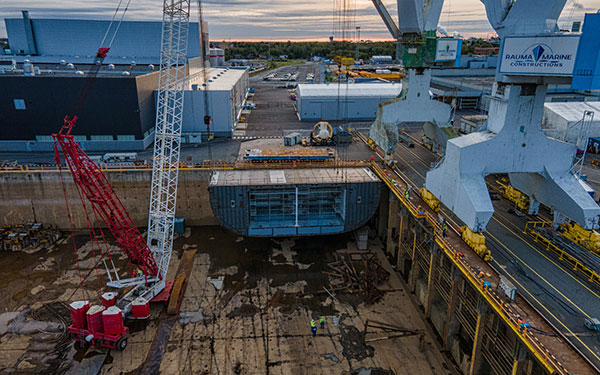
photo: TALLINK GRUPP
”Various groups of shipbuilders, as
well as the employees of different subcontractors,
need to be kept apart from each
other. Additional hygiene and face masks
are required at the workplace, plus occasional
quarantines for seasonal workers.
All this has made it more difficult for the
shipyard to take up new shipbuilding projects,”
Mr. Heinimaa recounts.
ECOLOGICALLY DESIGNED CAR AND PASSENGER FERRY
The ’Aurora Botnia’ car and passenger
ferry was floated out at Rauma shipyard
in early September of 2020.
”Some minor delays have been
recorded during the shipbuilding, particularly
in the case of certain shipments of
propulsion equipment.”
Since the hull of the vessel was completed,
the equipment assembly and interior
work has been ongoing, such as piping,
insulation, ventilation and electrical
installation. Furthermore, work around the
engine rooms and the car deck has been
continued.
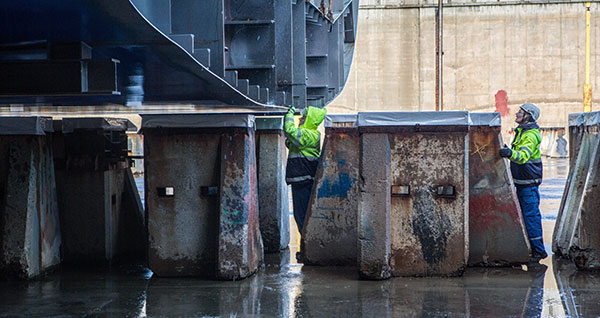
photo: RAUMA MARINE CONSTRUCTIONS
The outfitting phase will be concluded
with sea trials and commissioning
for operation in spring 2021.
The ’Aurora Botnia’ will be the first
car and passenger ferry in the world with a
Clean Design class notation. The four main
engines of the ship will run on both liquified
natural gas (LNG) and biogas. When
approaching the harbour or departing, the
ferry can operate utilising electrical power.
Owing to these new technologies, the carbon
dioxide emissions from the ferry will
be quite low.
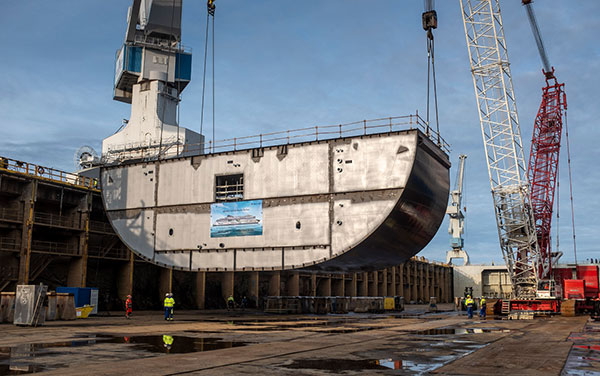
photo: TALLINK GRUPP
Another vessel currently being built
at Rauma shipyard is Tallink’s ’MyStar’
shuttle ferry. Keel-laying for this ship took
place on 18 September, 2020.
”This one is a big and fast ferry. At
present, the hull is being assembled. The
ship is expected to be launched in the summer
of 2021. Delivery is scheduled for early
2022,” Mr. Heinimaa notes.
When completed, the ferry will operate
between Helsinki and Tallinn. For the
shipyard, the shipbuilding project has provided
more than 1,500 person-years of
employment.
MULTI-PURPOSE CORVETTES FOR THE FINNISH NAVY
Among the shipyard’s major current projects
is the Finnish Navy’s Squardon 2020 project,
consisting of four multi-purpose corvettes.
”For this project, the main equipment
procurements and the drafting of
the final blueprints are now ongoing,”
Heinimaa says.
The most significant parts of machinery
equipment in the multi-purpose corvettes
are the gas turbine, the electric drive
system along with the gear system that
connects them to the propeller shafts, and
the main diesel generators.
The electric drive system and the
gear system will be supplied by the German
company RENK AG.
The gas turbines for the corvettes
will be supplied by General Electric.
The LM2500 gas turbine is the world’s most commonly used gas turbine in naval
ships.
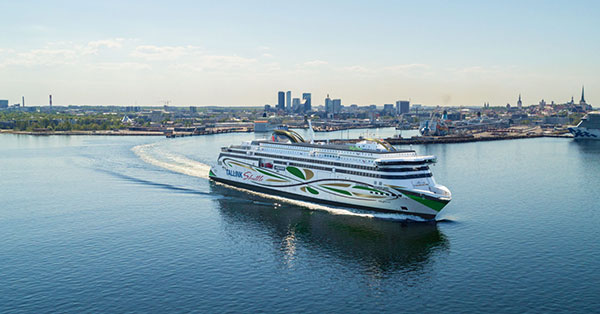
photo: TALLINK GRUPP
UNIQUE SOLUTIONS FOR HARSH CONDITIONS
In the building and design of the four multipurpose
Navy corvettes, there are additional
important considerations of security.
”Details of materials or components
cannot be discussed in teleconferences or
other open communications lines,” Mr.
Heinimaa points out.
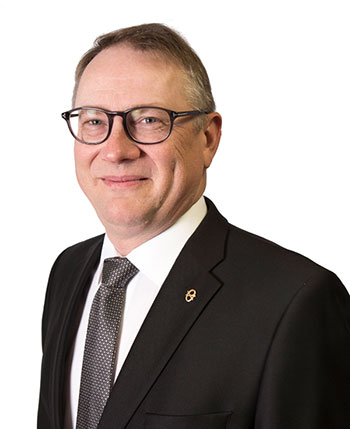
President and CEO of Rauma Marine Constructions Jyrki Heinimaa
photo: RAUMA MARINE CONSTRUCTIONS
”Due to the coronavirus pandemic,
it has also become more difficult to meet
various suppliers of components in person
abroad, with regard to the rapidly changing
virus situations in different countries.
Some phases of the work may yet have to
be re-scheduled because of this.”
If no major delays are encountered,
the actual building of the four Navy corvettes
is expected to start in 2022. They
will eventually replace seven older warships
that are currently in service.
”These corvettes will be unique: the
first corvettes in the world that are capable
of operating in heavy ice conditions,”
Mr. Heinimaa emphasises.
After a relatively tough year of shipbuilding,
he looks to the future with confidence.
”Overall, the pandemic has called for
some new practices in shipbuilding, but
things could have been much worse. Some
shipyards abroad have had to close down
altogether. Our professional and skilled
shipbuilders, together with out network
of responsible subcontractors, have helped
to keep us afloat.”
Text by Ari Monenen



